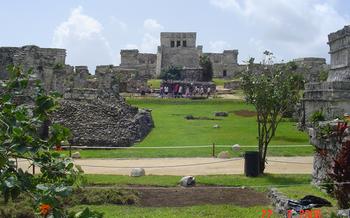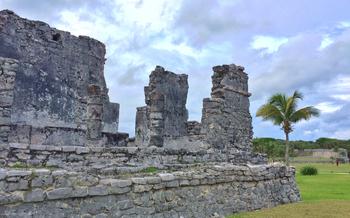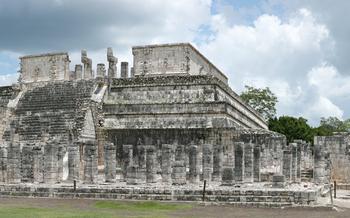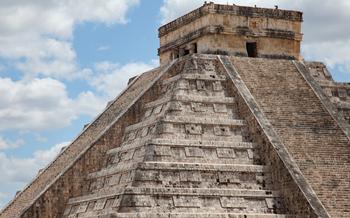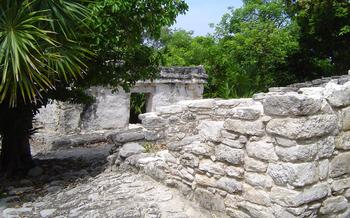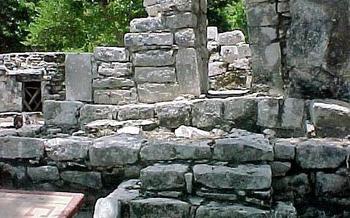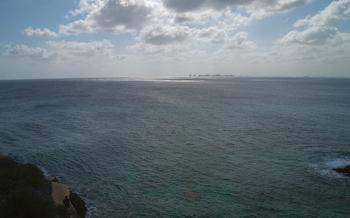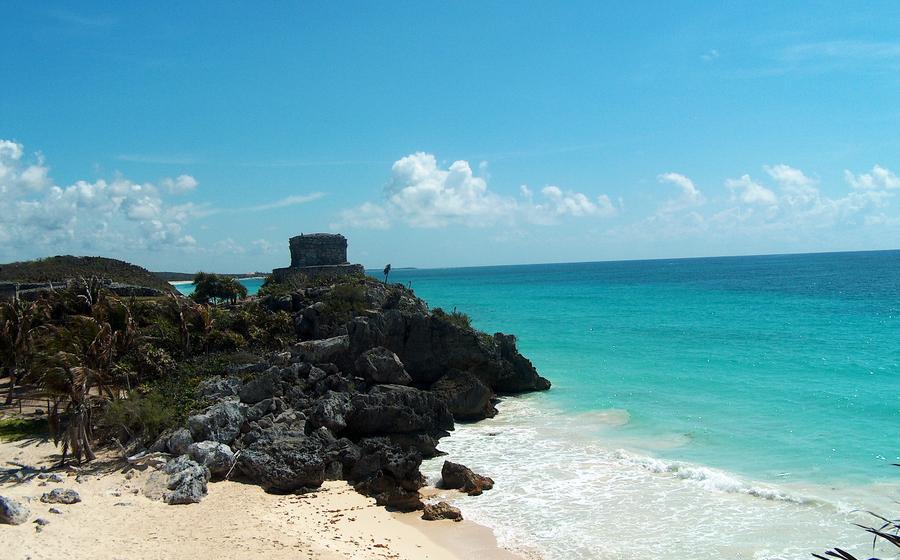
Cenote Xibalba
- Cenote Xibalba: An Enchanting Underworld
- Location and Accessibility
- Admission Fees and Opening Hours:
- Unveiling the Underground Realm
- Swimming and Snorkeling Adventure
- Contemplate the Cave System
- Witness the Halocline
- Mayan Rituals and Ceremonies
- Surrounding Natural Beauty
- Capturing the Enchanting Beauty: Photography and Social Media
- Local Cuisine and Delicacies
- Accommodations and Amenities
- Safety and Precautions: Ensuring a Memorable and Safe Experience at Cenote Xibalba
- Cultural Sensitivity and Respect
- Insider Tip: Explore Hidden Cenotes
Cenote Xibalba: An Enchanting Underworld
In the heart of Riviera Maya, Mexico, lies a captivating natural wonder that transports visitors to an ancient realm of mystery and enchantment: Cenote Xibalba. This subterranean marvel holds a profound historical significance, as it was considered a sacred site by the ancient Mayans. They believed that cenotes were gateways to Xibalba, the Mayan underworld, a place where the souls of the deceased journeyed after death. The cenote's name, Xibalba, reflects this sacred connection and invites visitors to explore the depths of this mystical realm.
Cenote Xibalba was formed millions of years ago by the collapse of a limestone bedrock, creating a breathtaking cavern filled with crystal-clear water. Over time, the water eroded the surrounding rock, forming intricate stalactites and stalagmites that adorn the cenote's walls and ceiling. These natural sculptures add to the enchanting ambiance of the cenote, creating a surreal and awe-inspiring spectacle.
Visitors to Cenote Xibalba can immerse themselves in a variety of exciting activities that allow them to fully experience the wonders of this natural masterpiece. From swimming and snorkeling in the refreshing waters to exploring the interconnected cave system, there is something for every adventurer to discover. Whether you seek a thrilling aquatic adventure or a journey into the depths of Mayan mythology, Cenote Xibalba offers an unforgettable experience that will captivate your senses and leave you with lasting memories.
Location and Accessibility
Cenote Xibalba is conveniently situated just a short distance from the heart of Tulum, making it easily accessible for visitors. To reach the cenote, travelers can opt for various transportation options. Renting a car or joining a guided tour package provides the flexibility to explore the cenote at your own pace or benefit from the insights of experienced local guides. Public transportation is also readily available, with buses and colectivos departing from Tulum town to the cenote's vicinity.
For those seeking a more immersive experience, cycling to Cenote Xibalba is a fantastic option. The picturesque route offers stunning views of the surrounding landscapes and allows visitors to connect with the natural beauty of the region. No matter the chosen mode of transportation, the journey to Cenote Xibalba promises a memorable adventure.
To make the most of your visit, aim to arrive at the cenote early in the morning or late in the afternoon. These times offer optimal lighting conditions for photography and snorkeling, allowing you to capture the cenote's beauty in all its glory while avoiding the midday crowds.
Admission Fees and Opening Hours:
Visiting Cenote Xibalba requires an admission fee. The current fee for adults is [Admission fee for adults], while children and local residents enjoy discounted rates of [Admission fee for children] and [Admission fee for local residents], respectively. For group bookings, students, and seniors, there are additional discounts available. The cenote is open to the public daily from [Opening time] to [Closing time]. However, to avoid crowds and capture the best lighting for photography, it is recommended to visit either early in the morning or late in the afternoon. The opening hours may vary slightly during holidays or special events, so it is advisable to check the official website or contact the cenote's management before your visit.
Unveiling the Underground Realm
Descending into the depths of Cenote Xibalba is an awe-inspiring experience that transports visitors to a realm of natural wonder. As you navigate the pathway, safety measures are in place to ensure a smooth and secure descent. The cenote's natural beauty unfolds before your eyes, revealing crystal-clear waters that shimmer in the sunlight. The diverse marine life, including colorful fish and turtles, adds a vibrant touch to the tranquil setting.
The spiritual and mystical ambiance of the cenote envelops you as you explore its depths. This cenote was considered a sacred site by the ancient Mayans, who believed it to be a gateway to the underworld. The rock formations, shaped over thousands of years by the relentless flow of water, create an ethereal atmosphere that invites contemplation and introspection.
Local legends and folklore intertwine with the history of Cenote Xibalba, adding a layer of mystique to your visit. The cenote is said to be a place where the spirits of the deceased reside, and visitors often leave offerings to honor their loved ones. Whether you're a history buff, a nature enthusiast, or simply seeking a unique and transformative experience, Cenote Xibalba offers an unforgettable journey into the heart of the Mayan underworld.
Swimming and Snorkeling Adventure
Embark on an exhilarating swimming adventure in the crystal-clear waters of Cenote Xibalba. Dive into the refreshing depths and feel the weightlessness as you glide through the enchanting underwater realm. Marvel at the diverse marine life that calls this cenote home, from colorful tropical fish to graceful sea turtles. Snorkeling enthusiasts can immerse themselves in the mesmerizing underwater world, discovering hidden crevices and vibrant coral formations. Remember to follow safety regulations, wear appropriate swimwear and footwear, and respect the delicate ecosystem by avoiding touching or disturbing marine life. Embrace the opportunity to create unforgettable memories in this aquatic paradise.
Contemplate the Cave System
The Cenote Xibalba is part of an interconnected cave system, serving as a natural entrance to a labyrinth of subterranean rivers and chambers. This cave system holds immense scientific significance, attracting explorers and researchers worldwide. Ongoing exploration and discoveries within these caves shed light on the region's geological history and provide valuable insights into ancient Mayan practices.
As you venture through the cenote, take a moment to appreciate the intricate cave formations, stalactites, and stalagmites that adorn its walls. These natural sculptures, formed over thousands of years by the slow dripping of water, create a mesmerizing and awe-inspiring sight.
Remember to respect the fragile ecosystem within the cave system. Avoid touching or disturbing any cave formations, as they are easily damaged and take a long time to regenerate. By preserving the natural beauty of these caves, we ensure that future generations can continue to marvel at their wonders.
Witness the Halocline
The Cenote Xibalba offers a mesmerizing natural phenomenon known as the halocline, a unique layering of salt and freshwater that creates a captivating visual effect. As you descend into the cenote, you'll encounter a distinct boundary where the denser saltwater meets the lighter freshwater, forming a surreal and ethereal atmosphere.
The halocline is not only visually stunning but also scientifically significant. It occurs due to the difference in density between the two water bodies, with the saltwater being denser than the freshwater. This density difference prevents the two layers from mixing completely, resulting in a stable and visually striking separation.
While swimming in the halocline area, you'll notice a peculiar sensation as you move from one layer to another. The saltwater layer feels denser and more buoyant, while the freshwater layer feels lighter and less supportive. It's an unforgettable experience that allows you to witness the wonders of nature firsthand.
However, it's essential to take safety precautions when swimming in the halocline area. The transition between the two water layers can be disorienting, and it's crucial to maintain buoyancy and avoid sudden movements to prevent disorientation or panic. Additionally, it's important to stay hydrated, as the saltwater layer can cause dehydration.
Overall, the halocline at Cenote Xibalba is a must-see natural wonder that offers a unique and awe-inspiring experience. Remember to swim responsibly, stay hydrated, and enjoy the mesmerizing beauty of this natural phenomenon.
Mayan Rituals and Ceremonies
Cenotes held a profound spiritual significance for the ancient Mayans. They believed these natural pools were portals to the underworld, known as Xibalba, and considered them sacred sites for various rituals and ceremonies. Archaeological evidence suggests that the Mayans performed offerings, prayers, and purification rites within the cenotes, seeking guidance and protection from the gods. Discoveries of ceramic vessels, jewelry, and human remains provide glimpses into these ancient practices. Visitors to Cenote Xibalba can immerse themselves in the mystical ambiance and contemplate the cultural heritage associated with this awe-inspiring natural wonder.
Surrounding Natural Beauty
Cenote Xibalba is enveloped in a verdant embrace of lush vegetation, where towering trees intertwine their branches, creating a natural canopy that filters the sunlight, casting an ethereal glow upon the cenote's waters. The surrounding tropical forest teems with an abundance of vibrant flora and fauna, inviting visitors to delve deeper into the wonders of nature. Colorful birds flit through the trees, their melodious songs filling the air with a harmonious symphony. Iguanas bask lazily in the sun, their emerald scales shimmering like jewels against the backdrop of the lush foliage. Graceful monkeys swing from branch to branch, their playful antics adding a touch of magic to the serene surroundings.
Beyond the immediate vicinity of the cenote, a network of well-maintained trails beckons adventurers to explore the diverse ecosystems that encompass this natural paradise. These trails wind through dense jungles, leading to hidden waterfalls, secluded cenotes, and ancient Mayan ruins. Embarking on these trails offers a chance to immerse oneself fully in the splendor of Tulum's natural beauty, creating memories that will last a lifetime.
It is crucial to emphasize the significance of embracing sustainable tourism practices while exploring the surroundings of Cenote Xibalba. Visitors are encouraged to tread lightly, leaving no trace of their presence and respecting the delicate balance of the ecosystem. By adhering to responsible tourism principles, travelers can ensure that the natural beauty of this region remains pristine for generations to come.
Capturing the Enchanting Beauty: Photography and Social Media
The allure of Cenote Xibalba extends beyond its natural beauty; it's also an Instagrammer's paradise, offering endless opportunities for capturing awe-inspiring shots. Dive into the crystal-clear waters and photograph the mesmerizing underwater world, showcasing the vibrant marine life and ethereal rock formations. Above ground, capture the lush greenery surrounding the cenote and the magical play of light filtering through the jungle canopy. Share your breathtaking photos on social media using #CenoteXibalba and inspire others to embark on their own cenote adventures. Remember to tag your location and use relevant hashtags to connect with fellow cenote enthusiasts and nature lovers worldwide.
Local Cuisine and Delicacies
After a refreshing dip in Cenote Xibalba, tantalize your taste buds with the culinary delights of Tulum. The town is renowned for its fresh seafood, caught daily from the Caribbean Sea. Indulge in ceviche, a zesty dish made with raw fish marinated in citrus juices, or savor grilled lobster, a local delicacy. For a taste of traditional Mexican cuisine, try Cochinita Pibil, a slow-roasted pork dish infused with aromatic spices and wrapped in banana leaves. Don't miss out on the local street food, where you can find delicious tacos, empanadas, and fresh fruit juices. As you savor the flavors of Tulum, be sure to interact with the friendly locals, who are always eager to share their culture and recommendations.
Accommodations and Amenities
When planning your trip to Cenote Xibalba, a range of accommodation options await you near this natural wonder. From budget-friendly hostels to luxurious eco-lodges, there's something to suit every traveler's needs and preferences.
For those seeking a comfortable and convenient stay, consider the nearby hotels that offer amenities like swimming pools, restaurants, and tour desks. These hotels provide easy access to the cenote and other attractions in the area.
If you prefer a more immersive experience, opt for an eco-lodge nestled within the lush tropical forest surrounding Cenote Xibalba. These lodges often feature sustainable practices, allowing you to enjoy the natural beauty of the region while minimizing your environmental impact.
When choosing your accommodation, consider factors such as your budget, group size, and desired amenities. Whether you seek a basic place to rest your head or a luxurious retreat, you'll find suitable options near Cenote Xibalba.
Safety and Precautions: Ensuring a Memorable and Safe Experience at Cenote Xibalba
Cenote Xibalba is generally considered safe for visitors, but it's essential to prioritize safety measures to ensure a worry-free and enjoyable experience. For those with limited swimming or snorkeling skills, it's advisable to wear a life jacket for added buoyancy and peace of mind. Appropriate swimwear and footwear are crucial to prevent slipping and discomfort. Additionally, visitors should stay hydrated and avoid excessive sun exposure by applying sunscreen and wearing protective clothing.
To minimize environmental impact and protect the delicate ecosystem of the cenote, visitors are encouraged to avoid using harsh chemicals, such as sunscreen containing oxybenzone or octinoxate, which can harm coral reefs. Respecting the natural surroundings and refraining from touching or disturbing cave formations is essential for preserving the pristine beauty of Cenote Xibalba. Following these safety guidelines and demonstrating environmental consciousness will ensure a memorable and safe experience for all visitors.
Cultural Sensitivity and Respect
As you venture into the enchanting world of Cenote Xibalba, it's crucial to remember that you are a guest in an area rich in Mayan history, traditions, and culture. Show your respect by embracing cultural sensitivity and practicing responsible tourism. Make an effort to learn a few basic Spanish phrases to interact with locals and express your appreciation for their heritage. Respect the sacredness of the cenote by refraining from loud noises, littering, or touching the delicate rock formations. Support local businesses by indulging in traditional Mexican cuisine and handcrafted souvenirs, contributing to the preservation of their vibrant culture. Remember, your actions as a traveler can have a profound impact on the community, so be mindful and leave a positive legacy.
Insider Tip: Explore Hidden Cenotes
Beyond the well-known Cenote Xibalba, Tulum boasts a hidden network of lesser-explored cenotes that offer a unique and secluded experience. These hidden gems, often tucked away in dense jungle or off the beaten path, provide a chance to immerse yourself in the tranquility of nature and discover the pristine beauty of the Yucatan Peninsula.
To find these hidden cenotes, consider hiring a local guide who can lead you to these secluded spots and share insights into their history and significance. Alternatively, embark on a self-exploration adventure, using maps, GPS coordinates, or recommendations from fellow travelers. Remember to pack essentials like water, snacks, and appropriate footwear for traversing rough terrain.
As you venture into these hidden cenotes, show respect for the environment and leave no trace of your visit. Avoid using harsh chemicals or sunscreens that can harm the delicate ecosystem. By practicing sustainable tourism, you can help preserve these natural wonders for future generations to enjoy.
One of my personal favorite hidden cenotes is Cenote Cristal. Located a short drive from Tulum, this secluded cenote features crystal-clear waters, dramatic rock formations, and a serene ambiance. With fewer visitors, you can have a more intimate and peaceful experience, surrounded by the beauty of nature.
So, if you're looking for an off-the-beaten-path adventure, consider exploring the hidden cenotes of Tulum. These secluded gems offer a unique opportunity to connect with the natural world and discover the hidden treasures of the Yucatan Peninsula.


